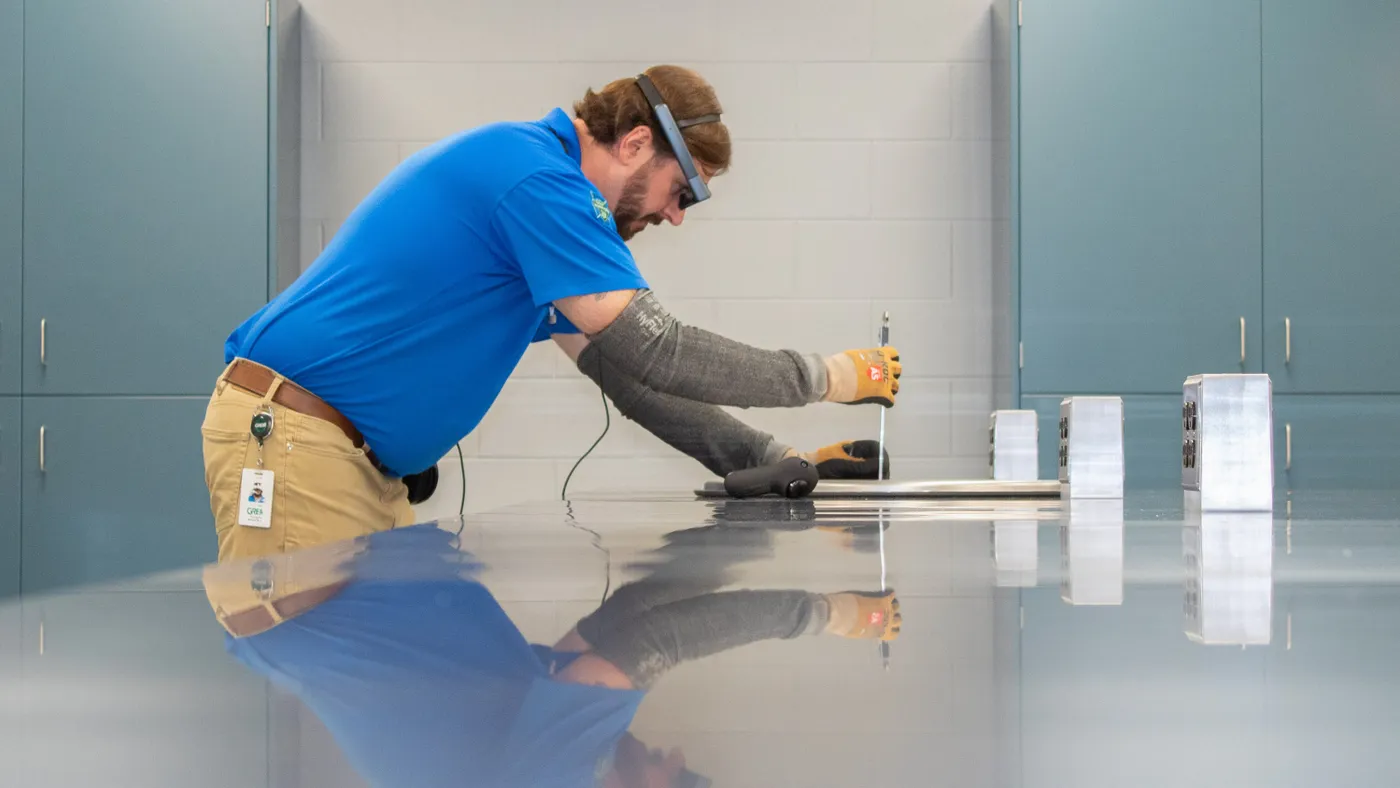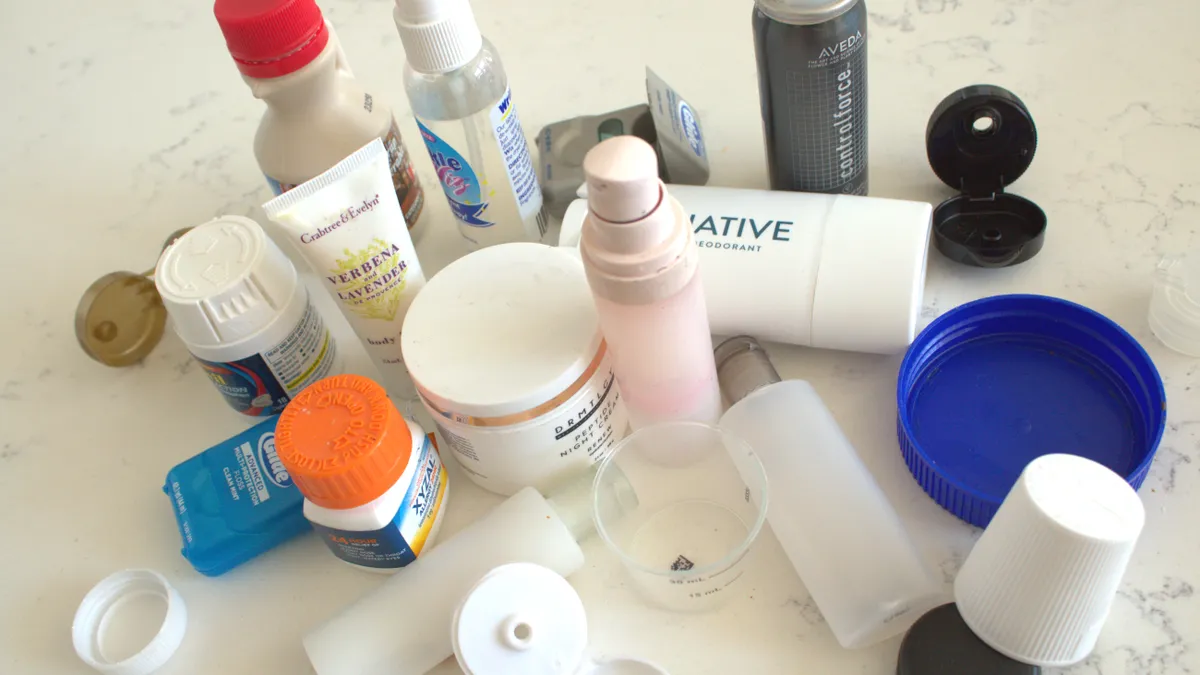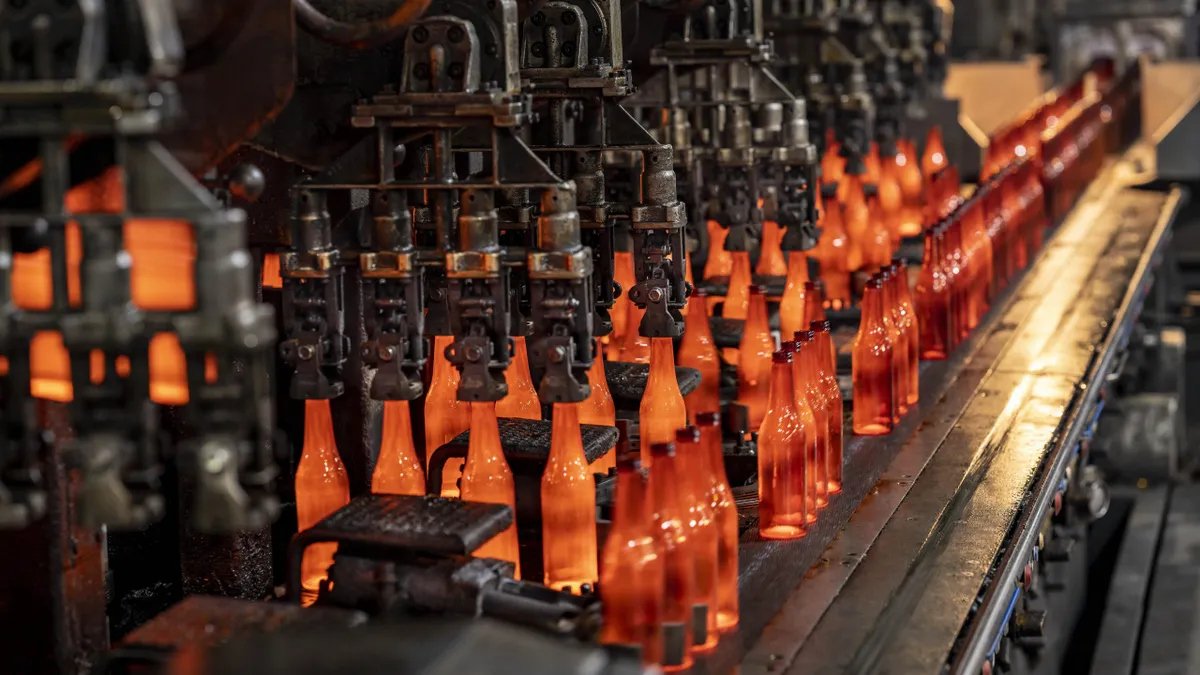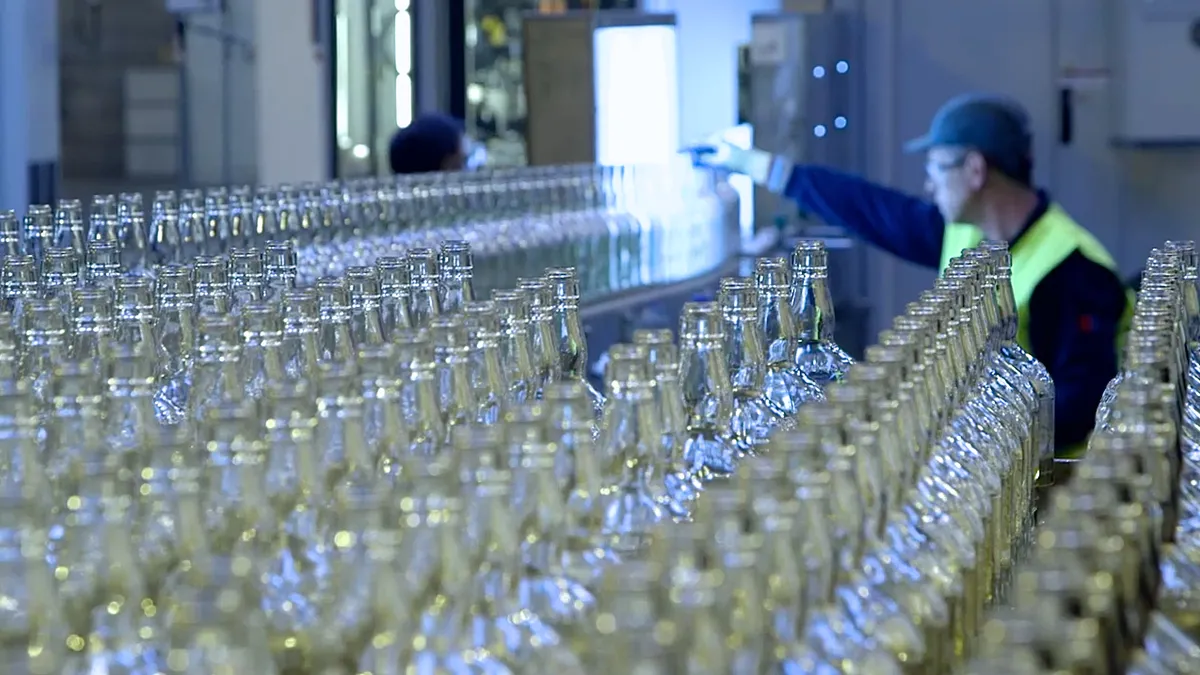Donning a headset with goggles to enter a virtual world isn't just child's play. Adults also use technology for altered reality experiences, and the practice is emerging as a means for businesses to train employees — including those at packaging manufacturing companies.
In recent years, brands and their packaging suppliers have dabbled with incorporating consumer-facing AR experiences into packaging, such as with a QR code, for enhanced engagement and marketing opportunities. But applying the same concept to internal company purposes is only beginning to gain traction.
"I don't think anybody" has a sense of how many packaging companies currently use augmented reality and virtual reality, because the use "is still relatively small. It's relatively new," and little solid data is available on the topic, said Tuong Nguyen, director analyst at Gartner.
We still have a pretty long road before we start to see even early majority adoption, meaning 16% adoption, across heavy industry — let alone packaging.

Tuong Nguyen
Director analyst at Gartner
AR and VR currently offer the most benefits for frontline workers, those in heavy industries such as manufacturing, but not management, he said. When considering all frontline employees who potentially could access training via AR or VR, only up to 5% to 10% of those likely use these methods right now, Nguyen estimated.
"It's a very small number, but it's promising. And it's growing quickly," he said. But he offered a caveat: "Growing quickly from a small base doesn't necessarily mean that it's going to be huge next year."
Smurfit Westrock is one of the industry’s early adopters, having delved into this space in 2019. Georgia-Pacific has used it for about two years, Sonoco for about a year and a half and German molded fiber company Papacks for a year. At Greif, the idea of adding augmented and virtual reality options to training sessions is so new that the company just ran its first round of technology use case testing in September.
"It could completely change the way we operate," said Geoff Westphal, director of sustainable innovation at Greif. The company still is hashing out its use cases and which hardware to employ before launching any initiatives across its global operations.
The COVID-19 pandemic and social distancing propelled more companies to adopt these digital technologies for virtual training to boost safety. But growth in the market will take time.
"We still have a pretty long road before we start to see even early majority adoption, meaning 16% adoption, across heavy industry — let alone packaging," Nguyen said, referencing Gartner’s technology diffusion curve in its Emerging Tech Impact Radar report. "This is a marathon. It's not a sprint."
While scant aggregated technology adoption statistics are available, 2022 survey data from the National Association of Manufacturers described manufacturers' intentions for their digital transformations. It covered a "new topic," the manufacturing metaverse, or virtual world, with 38% of respondents saying they were still trying to understand the concept and 20% saying they had no plans to adopt a metaverse approach. Anecdotal evidence shows the technology slowly creeping into use for manufacturing applications from automaking to maintenance to employee onboarding.
Early adopters agree that despite the timeframe for mainstream uptake, these experiences represent the future of training for packaging companies as well as the broader manufacturing sector.
"This will be a standout in the next couple of years — five or six years," said Tahsin Dag, founder and CEO at Papacks.
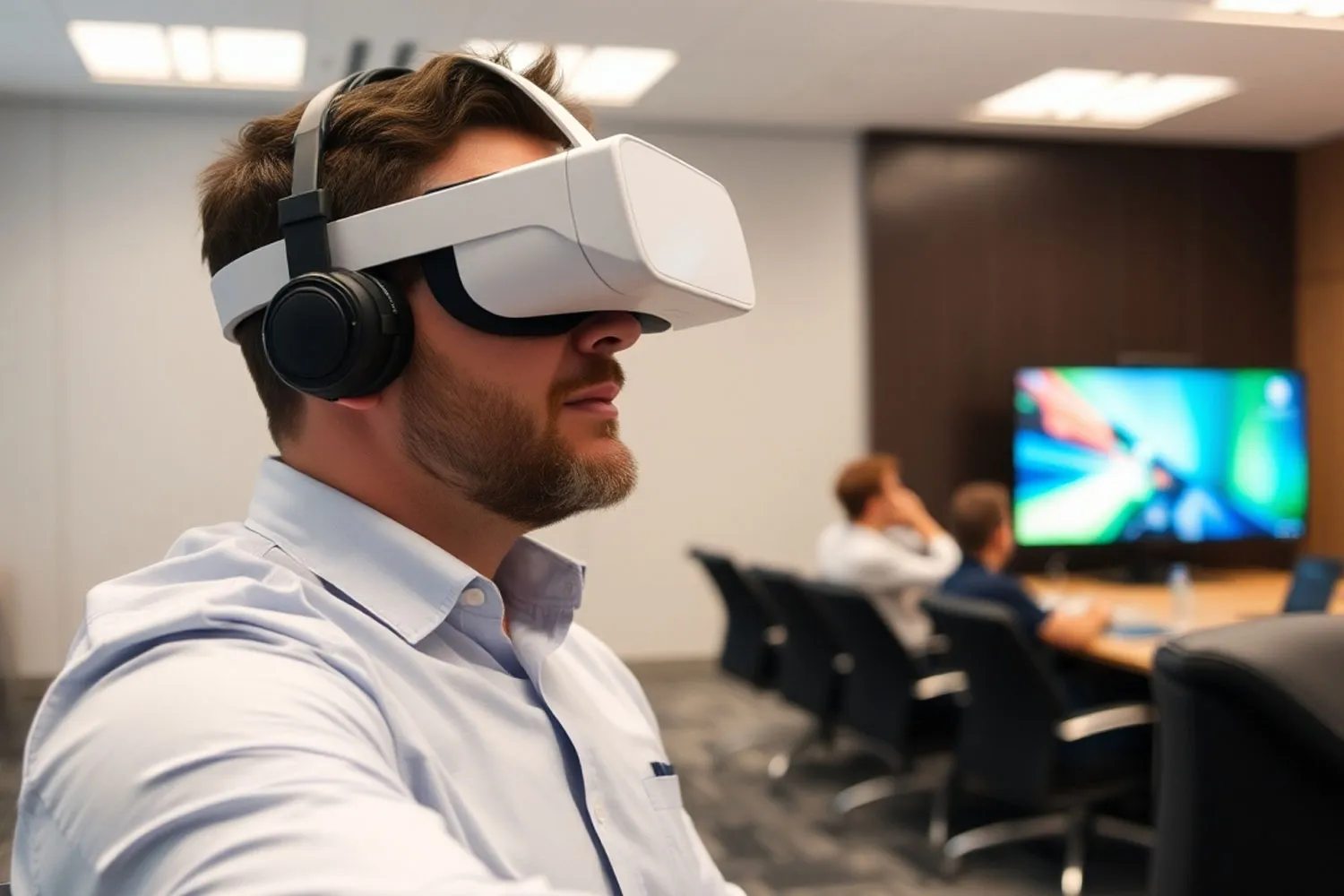
Using the equipment
First and foremost, it's important to think of AR and VR "as an experience or an interface. In and of itself, it's not a technology," Nguyen said. "Rather, they're a collection of technologies that, when you assemble them a certain way, give you this type of interface. Think of AR and VR as being ways that people interact with the world around them."
Due to the lower hardware barriers to entry and greater ease of use, companies frequently leverage AR as their first stepping stone into XR.
"Augmented reality is really taking off pretty quickly," said Greif's Westphal. "The VR piece, we've been developing different modules to test over the past year; that's still just early stages of testing. There's a lot more work that goes into developing those."
A variety of extended reality, or XR, hardware is available, but some of it applies to industrial applications better than others. Certain devices already are attached to a hardhat, for instance, while other devices can be positioned over personal protective gear.
Vendors including Apple, HTC, Meta and Microsoft launched VR devices such as the Vision Pro, Vive, Quest and HoloLens, respectively. Microsoft specifically marketed its HoloLens "for business" to facilitate "precise, efficient hands-free work." Magic Leap and Vuzix are some popular vendors among the plethora who offer AR headsets.
VR systems immerse users in programs in which they tend to solely interact with the digital world in front of them, while AR-enabled tools often connect the user to a broader system that involves interacting with at least one human in a different location.
For instance, Greif technology testers demonstrated their AR models at a facility in Alsip, Illinois, one of the two locations where trials occurred in September. A trainer with a projection screen hooked up to their laptop ran the AR software once program files were selected for each interactive experience.
A trainee in another location, outfitted with an AR headset, remotely linked their device to that system and followed the trainer's real-time instructions through the headset. The user carried out a task — in this case, using real calipers to inspect the quality of a 55-gallon steel drum lid manufactured at that location — and the trainer saw on their screen each action the trainee performed.
"One of the things we're trying to figure out in this sprint, along with the different use cases, [is] the connectivity challenges," said Jason Bolek, sustainable innovation engineer at Greif, who co-led the testing in Illinois.
Hardware generally runs on rechargeable batteries and must be enabled for remote communication, such as through Wi-Fi or Bluetooth. Wired headsets are possible in certain cases, but they’re dangerous because cords introduce tangling and tripping hazards to an industrial setting. So far, Greif uses a mobile hotspot because it provides the best coverage even in places with spotty connectivity.
In addition to real-time experiences, sessions on XR-enabled devices typically can be recorded for future training or as a way to store institutional knowledge. The content is "super easy to record and edit" via a mobile app, said Powell Braddock, digital analyst at Sonoco.
In 2020, a team at Clemson University began building a virtual reality program, Stripe, to train people how to use a specific narrow web flexography printing press that is used in packaging. Users virtually run the press and change settings, then they see the results of the print job.
But when the COVID-19 pandemic struck, using shared headsets seemed less practical. The team therefore adapted the project to be compatible with web browsers so users could interface with the program like a 3D computer game. The browser-based version runs "on pretty lightweight software" so it's widely deployable, even on standard laptops.
"You load in these different scenarios and customize different settings on the press and still move around in 3D — just with a mouse and keyboard rather than the virtual headset," said Bobby Congdon, clinical assistant professor and internship coordinator in Clemson University's Graphic Communications Department.
Clemson developed it with support from industry sponsors, some of whom asked to use it at their own companies for training. Clemson also decided to "freely distribute this to any other educational facilities — universities, community colleges, high schools — anybody that has an interest in it or runs a print program can gain access to it," Congdon said.
Regardless of which device the program runs on, the interface allows digital alterations to printer settings, such as for different substrates, color alignment and ink coverage level. The system also can be programmed to present the trainee with common equipment difficulties that they must work through. It provides audio and visual feedback, especially when the user carries out a potentially unsafe activity like placing their virtual hand into a pinch point in the rollers.
Hearing audio cues or other program participants in the headset while in noisy industrial environments presents challenges for XR technologies. But hardware adjustments overcome the problem, sources say.
"We've really put our heads together and come up with a lot of solutions for this, because the work's got to get done — even when it's 110 decibels of noise going on around you," said Scott Burkey, technology fellow at Smurfit Westrock. Language barriers present another audio challenge, but "we also use natural language processing, so we can bridge some of those gaps."
Importantly, devices must exhibit durability during exposure to harsh manufacturing conditions.
"I'm really curious to see how this performs in a manufacturing environment," Greif’s Bolek said. "How does it handle heat? How does it handle impact? Because sooner or later, it's going to get dropped."
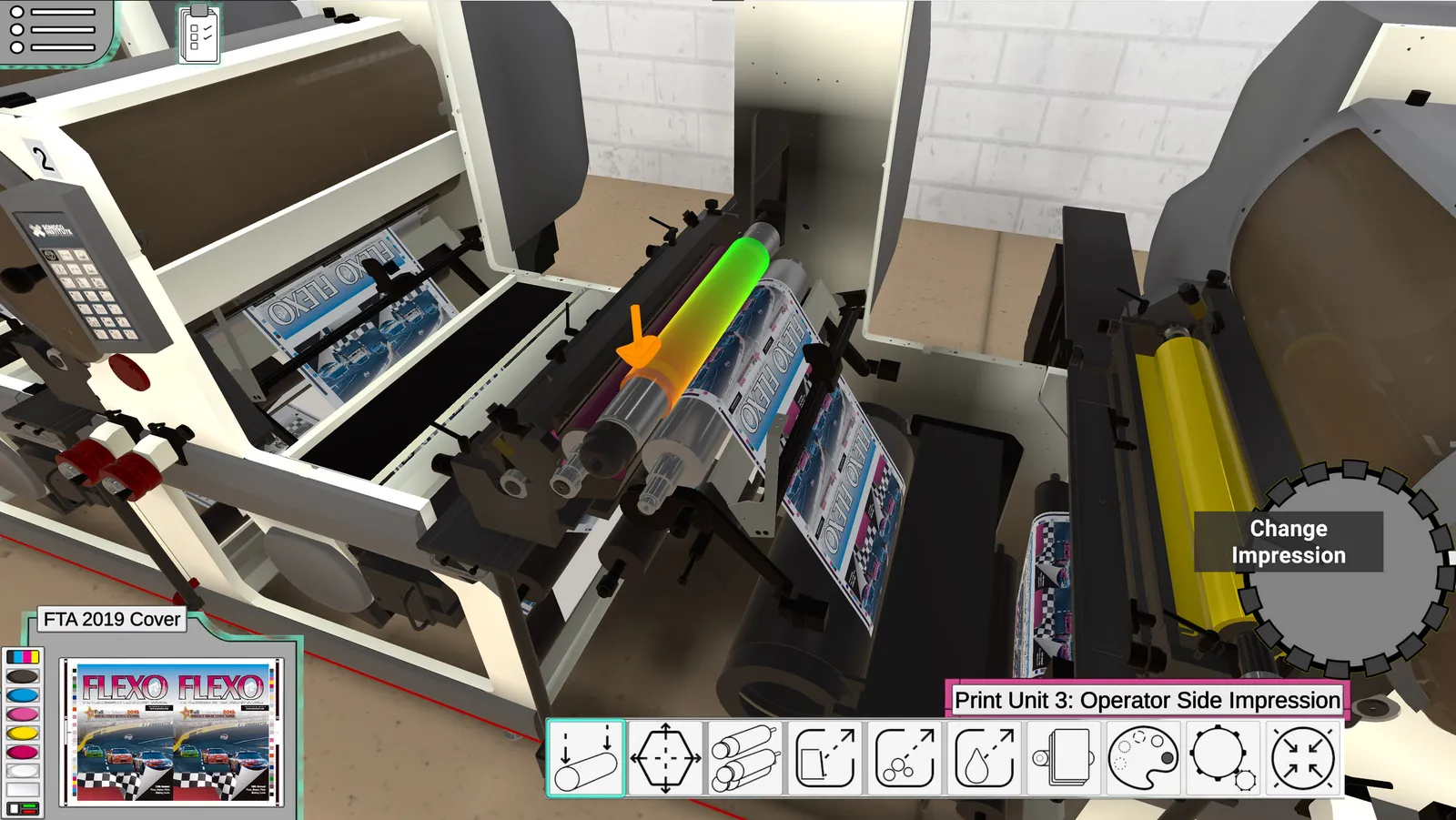
A safer, more sustainable reality
XR provides a type of hands-on training that helps many employees better retain information compared with simply sitting in a training room and listening to or watching an instructor. That produces a large return on investment, sources say.
"It tends to resonate with those of us who are more visual learners," Smurfit Westrock's Burkey said. "And spatial computing and immersive technologies like AR and VR are absolutely resonating with younger workers who've been consuming knowledge and reference materials digitally their whole lives."
That said, "I've been pleasantly surprised at how a lot of the veteran workers are embracing the technology," he added.
But as with many new technologies or procedures, not everyone is equally receptive to change. Dag explained that Papacks employees are either "afraid about it, or they are very enthusiastic."
Sonoco also reports a mixed response. "I think the more we use it and the more we see the benefits, the more it will be well received," said Tom Peacock, operations manager at Sonoco.
AR and VR technologies show enormous promise for boosting employees' safety during equipment operations and maintenance training — especially employees who have little or no experience in manufacturing.
"They can kind of experience some of the settings and cause-and-effect type of stuff without actually being next to the machine," Congdon said.
Georgia-Pacific explained in a post that these XR experiences are designed to "provide the employee with a sense of unease when necessary" without putting them in real danger. The user could observe a potentially hazardous equipment malfunction and troubleshoot it while remaining completely safe. This helps to "develop muscle memory on important safety steps they might otherwise have to read about or wait to do once they’re on the job," according to G-P.
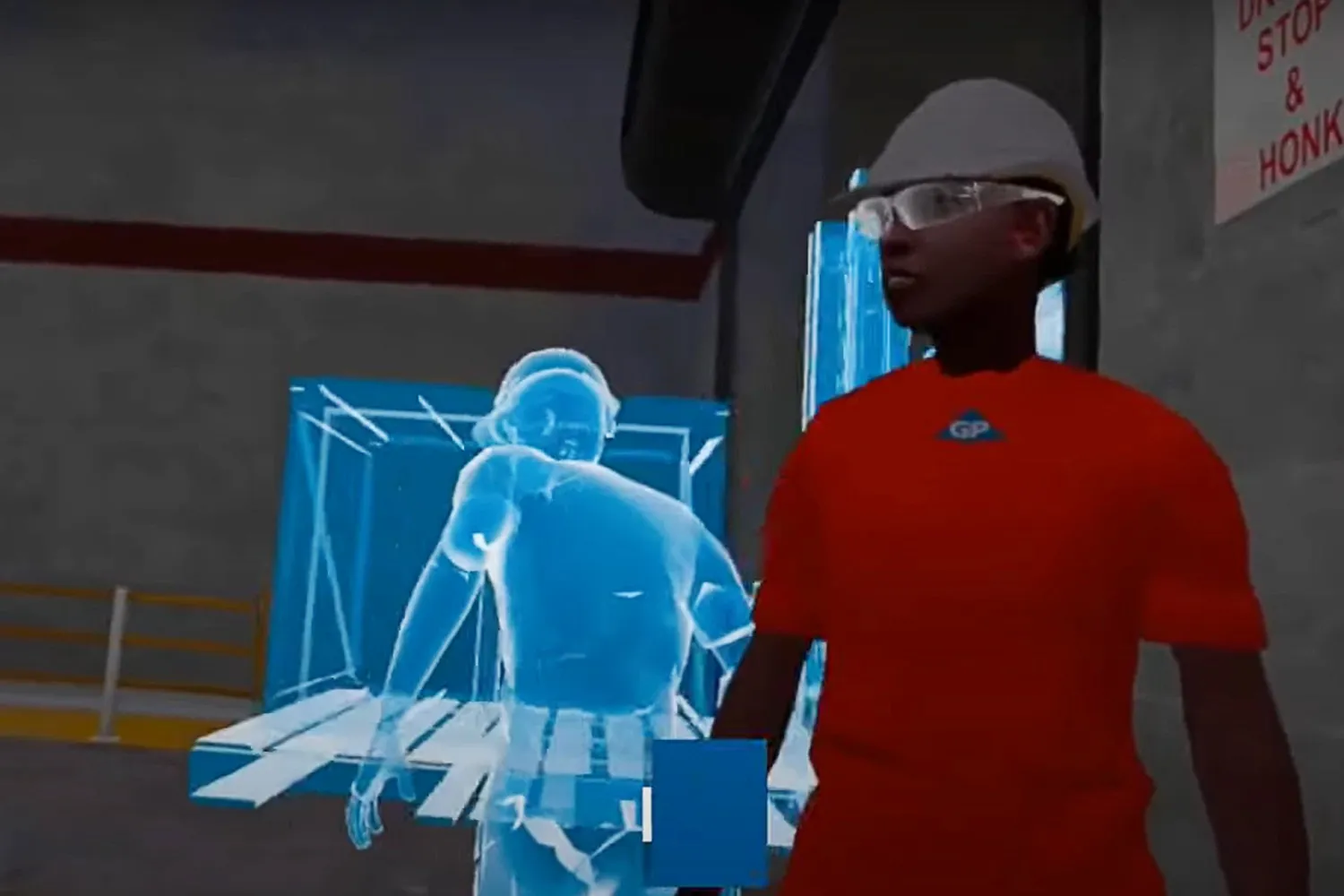
Training on lock-out, tag-out modules is a common use case for XR. Incorporating the tools into maintenance checks speeds the process and reduces downtime, sources say.
Besides aiding traditional training, AR images superimposed on the physical world serve as reference materials during regular production equipment maintenance or when calibrating machinery between different product runs, said Burkey.
"Nobody can remember all the settings for all the make-readys for the tens of thousands of products that we run," he said. “[Augmented reality] is portable, and it gives you the information you need where you need it in a way that's easy to consume."
XR proves to be a resource saver, including for time and materials. Time saved is a key metric for assessing technology ROI at Sonoco, Braddock said. With AR, one person simultaneously can train many employees in discrete locations and record the sessions for future use, which also eliminates the need to write down procedures, she said.
I'm confident that when we run the real numbers on this, we're going to have phenomenal payback. That's what we've seen with other companies that are further along in the journey.

Geoff Westphal
Director of sustainable innovation at Greif
XR tools are a one-time investment that reduce or eliminate the perennial need for employee travel. In the long run, that tamps down company costs as well as emissions.
"Augmented reality is really what we're looking for so our technical supporters can basically work from Germany and ... [we don't] fly people" as much, both to reduce expenses and increase sustainability, Papacks' Dag said. This remote capability comes in handy as Papacks ramps up Renw, its new U.S.-based joint venture with element6 Dynamics, he said.
Packaging manufacturers that also supply equipment find augmented reality technologies beneficial for a slightly different type of training: instructing customers on proper machine use and maintenance.
Sonoco's three-piece metal can manufacturing segment has leveraged its AR-enabled remote-assist program for purposes from "reprogramming machines to troubleshooting mechanical issues on machines to troubleshooting electrical issues on machines," Peacock said. "We've had off-shift people be able to call in and help [a customer] on the headset as well."
Businesses that experience significant churn or seasonal turnover also benefit from using XR for training, said Gartner's Nguyen. But ROI falls precipitously if the wrong employees use XR. Companies should target employees whose work requires operating or maintaining heavy machinery, Nguyen said, because the benefits are "much higher for frontline workers and much lower — unjustifiably low — for knowledge and information workers."
Some benefits aren't as quantifiable because they affect company culture, employee satisfaction and retention. But the technology still creates an impact, sources say.
Employee knowledge retention, enjoyment of training and Smurfit Westrock "being an employer of choice" all are important but difficult to quantify, Burkey said. But "we find that this technology provided to our new workforce really kind of sets us apart."

Forward view
Overall, companies report that system cost has not been a barrier to adoption. That opens the door for smaller packaging manufacturers to enter the XR space, as well. Adoptees detailed plans to scale up once more employees learn how to use the systems and additional use cases are realized.
With initial use case testing completed, Greif is determining how to advance its XR initiatives faster.
"While we're testing all this and we're doing that minutiae to make sure things work, we have to start building out what the next set of pilots looks like at that global scale," Westphal said. "I'm confident that when we run the real numbers on this, we're going to have phenomenal payback. That's what we've seen with other companies that are further along in the journey."
Other packaging companies, such as Tetra Pak, report investigating whether and how to incorporate AR and VR but not yet launching any formal initiatives. "I think this will come in the near future both for training and for remote support," said Fabio Raffone, Tetra Pak vice president of customer service operations, Americas.
Even for packaging companies that have delved into XR for employee training, the programs are limited in scope. But companies expect to ramp up quickly in the coming months and years.
For instance, two Sonoco Metal Packaging sites in the U.S. use the devices, and only about three people at the Wisconsin plant are capable of using them right now. But the company plans for ongoing expansion.
"Sonoco is really driven to innovate and to make employees' jobs easier and more accessible to master," Braddock said. "The IT department and the smart manufacturing team have really invested in this technology ... and I think we are seeing a return on that investment."
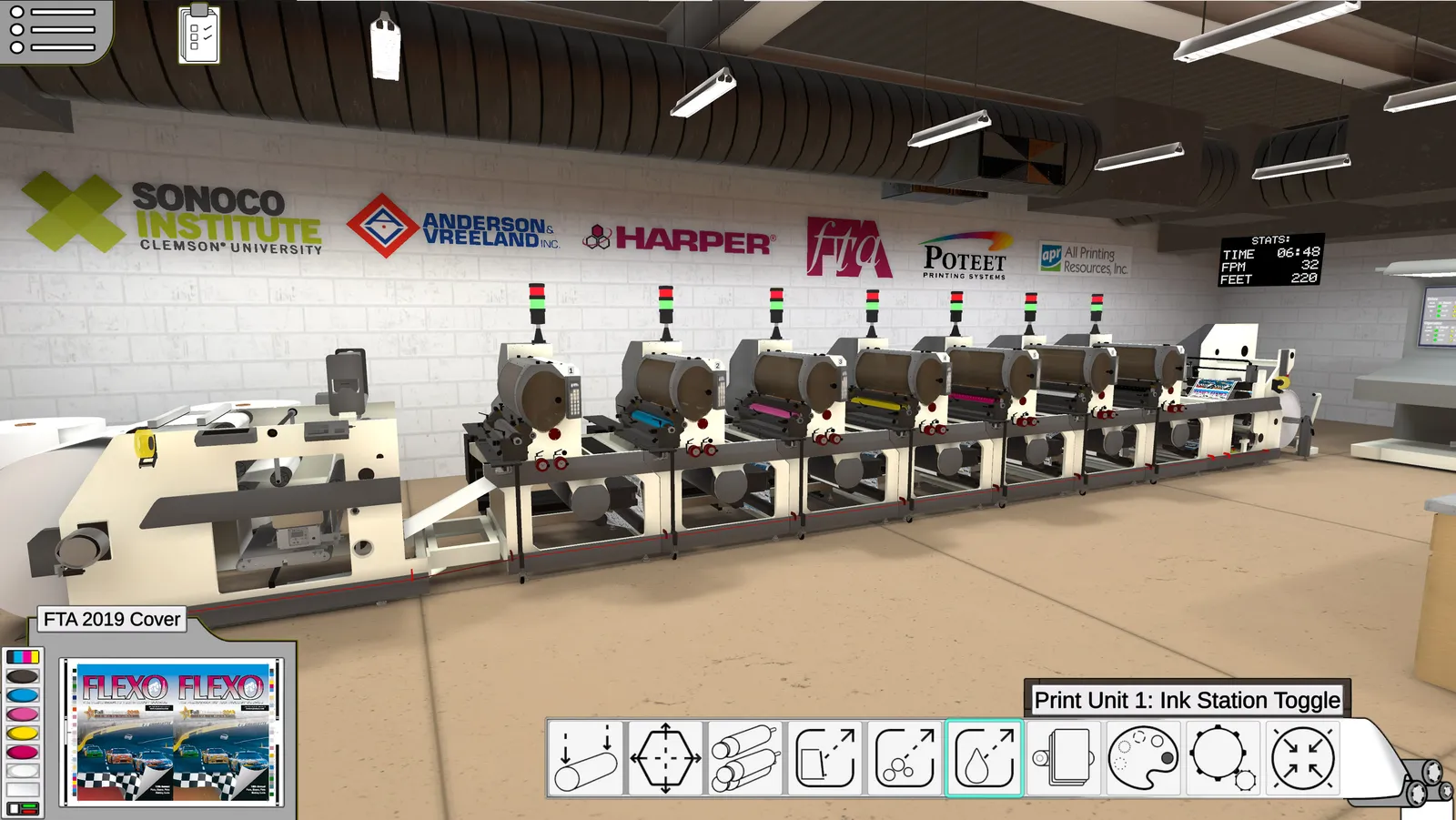
Clemson continues to develop its VR platform and add features. One discussion involves the potential to create modules in which the substrate in the web process tears so the user must problem-solve to restring the material and restart the machine. Noting the small team dedicated to the Stripe project, Congdon said they're looking for new sponsors to "get it across the finish line to where we have something we can deploy more widely in the industry."
While companies might want to advance quickly when incorporating augmented and virtual reality experiences into training, sources recommend a measured response to mitigate financial risk. Scaling quickly by purchasing hundreds of devices at once is risky, "because things move so quickly in extended reality," and vendors frequently go under or get purchased, Burkey said. "I'm deploying them in smaller batches ... not purchasing 300 devices that could get bricked next month."
While he recommended cautious progress, Gartner's Nguyen stressed the value of integrating extended reality into company training and other processes.
"I'll just underscore the point that this is the future of interactions and experiences," Nguyen said. "This is the next era.”
Visuals Editor Shaun Lucas contributed to this story.


